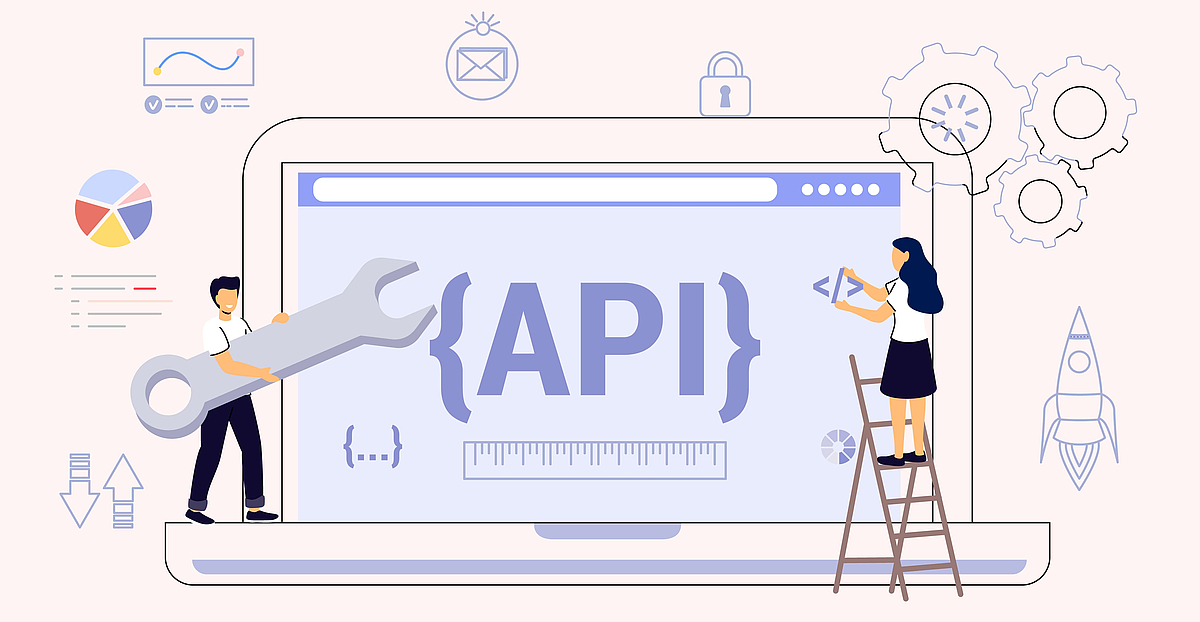If in the first part we have seen what they are, how they work and the main types of Web APIs that exist (we agreed that although we call them generically APIs, we will only refer to web APIs, leaving aside local APIs), let's see next how they work under data security conditions and what their main uses and applications are.
Authentication
To ensure that only authorized users can make requests, many APIs require authentication. This can be done through various methods, such as API keys, OAuth authentication or JWT tokens (JSON Web Tokens), which validate requests via credentials included in the request header.
API security - how data and the authentication process are protected
API security is a vital aspect that should not be neglected, as vulnerabilities can expose sensitive data and compromise the integrity of the entire system. Let's take a look at how data is protected and effective authentication methods to ensure a secure environment.
1. Authentication and authorization
One of the most important aspects of API security is authentication, the process by which a user's identity is verified, and authorization, which determines what resources and operations are accessible to an authenticated user.
- Token-based authentication: tokens, such as JSON Web Tokens (JWT), are often used to authenticate API requests. The token is generated after the user's credentials are verified and sent back to the client. The client will include this token in the HTTP headers of subsequent requests to prove authenticity.
- OAuth: is a widely used standard security framework that allows users to approve third-party applications to access their service without disclosing authentication credentials. OAuth is ideal for situations where the API needs to support cross-platform authentication.
- Role-based access control (RBAC): ensures that users only have access to the resources and functions that they are allowed according to their roles. This is an effective method for managing permissions at scale.
2. Data security
Protecting data transmitted between client and server is essential to prevent eavesdropping and other types of attacks.
- HTTPS: Using HTTPS instead of plain HTTP ensures that data sent is encrypted, making it inaccessible to attackers who might intercept network traffic.
- Input validation: all data received from users must be validated to prevent attacks such as SQL Injection or Cross-Site Scripting (XSS). Make sure the input matches expectations in terms of type, format and size.
3. Error handling
Proper error handling helps prevent leaks of information about the internal structure of the application that could be exploited by an attacker.
- Generic error messages: instead of detailed messages that may reveal implementation details, use error responses that provide enough information to be useful but do not expose critical details.
4. Monitoring and auditing
Constant monitoring of API activity can detect unusual behavior or potential security breaches.
- Audit logs: keep detailed records of activity, including who accessed the API, what data was requested, and any changes made. These logs are vital for investigating security incidents.
By implementing these security practices, you will not only ensure the protection of data and systems, but also a trusted environment for your API users.
Main uses and applications of APIs
While we've seen in detail what they are and how they work, in this chapter, we'll explore the main utilities and applicability of APIs.
1. Integration and interoperability
APIs allow different applications to communicate with each other, regardless of the programming language they are written in or the platforms they run on. This integration capability facilitates interoperability and streamlines business processes by automating the exchange of data and functionality.
Example: payment APIs, such as those offered by PayPal or Stripe, allow easy integration of payment processing into e-commerce platforms without developers having to create and secure their own payment systems.
2. Extensibility and customisation
By exposing certain functionality, APIs allow developers to extend and customise the functionality of existing applications. This gives end-users more control over software products and enables the creation of new services and features to meet specific needs.
Example: APIs offered by software-as-a-service (SaaS) platforms, such as Salesforce or Microsoft Dynamics, allow organisations to customise and extend functionality to better fit their business processes.
3. Innovation and rapid development
APIs speed up the development of new applications by reducing the amount of code developers have to write. They allow reuse of existing functionality, which means developers can build complex solutions in significantly less time.
Example: image recognition APIs offered by Google Cloud Vision or Amazon Rekognition allow developers to add AI capabilities to their own apps without requiring deep expertise in machine learning.
4. Operational efficiency
Using APIs can automate operational processes, reducing the time and costs associated with maintaining systems and managing data. APIs facilitate real-time data updates and automatic synchronisation between services, thereby improving efficiency and reducing human error.
Example: inventory management APIs can automate inventory updates between point-of-sale systems and e-commerce platforms, ensuring product information is always up-to-date and accurate.
5. Accessibility and mobility
Mobile APIs, such as those offered by Android or iOS, allow developers to create apps that can access device functionality such as camera, GPS or sensors, providing a richer and more personalised experience for users.
Example: navigation apps use APIs to access users' current location and provide real-time directions, enhancing the travel experience.
6. Monetisation
Many companies develop APIs that they offer as products, generating revenue by charging for access to them. This business model allows companies to leverage their data and services in innovative and profitable ways.
Example: Twitter and Facebook offer access to their APIs, allowing developers to create applications that interact with their platforms, while imposing limits and charges for use.
These examples illustrate how versatile and valuable APIs can be in a variety of contexts and industries, providing solid foundations for innovation, efficiency and growth in the digital age. If you'd like to talk more about APIs or a specific implementation project, drop us a line on our contact page.







